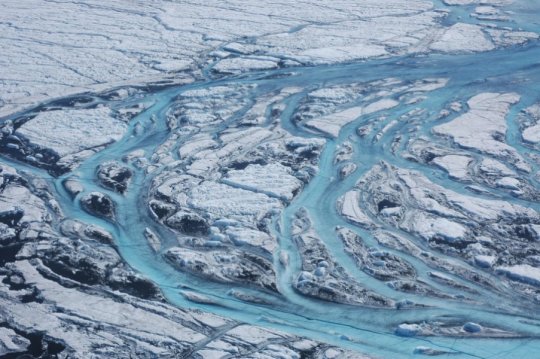Greenland ice sheet melt ‘off the charts’ compared with past four centuries

Surface melting across Greenland's mile-thick ice sheet began increasing in the mid-19th century and then ramped up dramatically during the 20th and early 21st centuries, showing no signs of abating, according to new research published Dec. 5, 2018, in the journal Nature. The study provides new evidence of the impacts of climate change on Arctic melting and global sea level rise.
"Melting of the Greenland Ice Sheet has gone into overdrive. As a result, Greenland melt is adding to sea level more than any time during the last three and a half centuries, if not thousands of years," said Luke Trusel, a glaciologist at Rowan University's School of Earth & Environment and former post-doctoral scholar at Woods Hole Oceanographic Institution, and lead author of the study. "And increasing melt began around the same time as we started altering the atmosphere in the mid-1800s."
"From a historical perspective, today's melt rates are off the charts, and this study provides the evidence to prove this" said Sarah Das, a glaciologist at Woods Hole Oceanographic Institution (WHOI) and co-author of the study. "We found a fifty percent increase in total ice sheet meltwater runoff versus the start of the industrial era, and a thirty percent increase since the 20th century alone."
For more: https://www.sciencedaily.com/releases/2018/12/181205133942.htm

